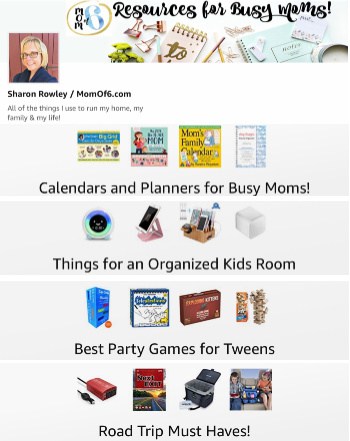As Moms running our households, many of us find ourselves in the position of managing the household budget- however it can be really hard to buckle down and focus on this task with everything else we are trying to juggle. But knowing how you are spending your money so that you can work towards making good decisions to help you to reach your financial goals is very important, which is why I have created this 3-part series on how to track your money.
In Part 1 we covered tips on how to create an organized bill paying system that is simple and cuts down on the amount of paperwork you receive, process, and recycle. In Part 2 we talked about how to approach the monthly bill paying process– using e-bills and online bill pay, as well as the benefits of online tracking systems such as Mint.
In this post we are going to get organized and tie it all together by talking about the cornerstone of tracking your money- creating and sticking to a household budget.
A Household Budget Starts With Developing Your Financial Goals
Obviously the reason we make money is to have the ability to buy things. No- money can't buy you love, or happiness- but it can pay your mortgage, heat your home, and put food on the table.
And if we are careful, and plan the use of our money strategically- we can do bigger things with it too- we can save for our retirement years, our kids' college tuitions, or even a once-in-a-lifetime vacation fund.
But to accomplish this, you need to set some goals. Now I'm no Suze Orman, and I am definitely NOT qualified to be dispensing any financial advice! I just hope to inspire you to do some hard thinking and to start exploring your own aspirations.
The way I see it- households should have some primary goals and some secondary goals.
Primary Goals
1. Live within your means
Really, there is no doubt that unless you are the US Government, you are only going to head towards financial failure if you consistently spend more than you earn.
So at the very minimum- you need to live on a balanced budget that spends no more than your income on an annual basis.
2. Save for your retirement
If your company or your significant other's company provides a 401K plan- then, by all means, do your very best to fund that 401kK to the maximum amount. As Suzi Orman, that goddess of money, advises- you can borrow and find creative ways to fund your children's college education- but you cannot borrow your way through retirement.
So unless you and/or your significant other plans on continuing to work for the rest of your lives- you must, must, must save for your retirement. And that's why I have it listed as a primary goal!
Secondary Goals
1. Save money to enjoy leisure activities
It's awesome to be able to save money to spend on “fun things”. And the list of possibilities is endless- vacations, grown-up toys like new TVs or fancy electronics, or even shiny new cars/boats/motorcycles.
These “toys” are great- they make life exciting and fun- but let's just be sure that we understand that items that fall into this category are “wants” not “needs”, and they should not be saved for ahead of our primary goals!
2. Kids college funds
Oh yes- I want to save the money to send all 6 of my kids to college. My Mom and Dad worked hard and saved to send my brother and me to school- and this has become an ingrained value that is core to me. So it is firmly planted on my list of secondary goals.
Notice again though, that this does NOT come before saving for our own retirement. Again, we can find other means to pay for college- but there are really no other means to pay for our golden years (and I don't know about you, but I am not planning on relying on social security to be there for me!).
Okay- get the picture? Before we can start building a budget, we need to do some hard thinking and decision making regarding our financial goals.
Building a Household Budget
1. Start by analyzing what you have spent in the past
If you have been following this series, you know that I think that Mint is a great tool to use to bring together all of your transactions- from your checking account, your savings account, your credit card companies- and see them all in one place.
Not only does it show you the payee, the date and amount paid, but Mint also attempts to categorize your transactions as a way to help you analyze them over time.
The cool thing here is- if you don't like the way that Mint has assigned the category- for example, Mint listed my purchase from winc.com as “shopping”, when clearly it should be listed as “groceries” (ha ha!) I can simply click on the little drop-down arrow, and select a different category.
And if I wanted to create a new category called “wine” then I could do that too. I can even set up a rule that every time Mint sees a transaction on my account from winc.com, that it should always categorize that as “wine”. Cool, right?
So start digging in and looking over how you have spent your money. If not over the course of the last year, at least over the last few months.
2. Determine what you think you will realistically spend this year for each category
The key here folks is to be realistic! We'd all love to say that we could cut the grocery bill by 40%, but to actually plan your grocery budget that way would be crazy.
Be sure to take into account rising expenses in areas such as home heating and gas for your cars, etc.
And by all means, make sure that your budget allows for you to meet your primary goals at a minimum, and hopefully a few of your secondary goals too.
3. Track your actual expenses vs your budget
For starters- where should you record this budget that you are creating? Well, Mint does allow you to enter in a budgeted amount for each category, and you can indicate whether that amount occurs monthly or only annually or even several times a year. But I found Mint's budgeting system to be too inflexible to meet my needs.
So instead, I created our annual household budget in Excel, and each month I export my transactions from Mint (after I have reviewed them and ensured they were assigned to the correct category) into Excel and then manually enter the actual subtotaled data into my budget tracking spreadsheet.
But the key to your success in household budgeting is to look at how you are doing!
Are there areas where you consistently over-spend what you had intended? Then you need to find ways to make some adjustments. Are there areas that you had planned expenses for, that you have decided not to spend? Then you can redirect some of that money elsewhere.
Budget- Analyze- Repeat- Budget- Analyze- Repeat- Budget- Analyze- Repeat
There are two more posts in this series on How to Track Your Money:




angie says
Thanks for the great tips I believe they will be very useful
come see what I shared at http://shopannies.blogspot.com